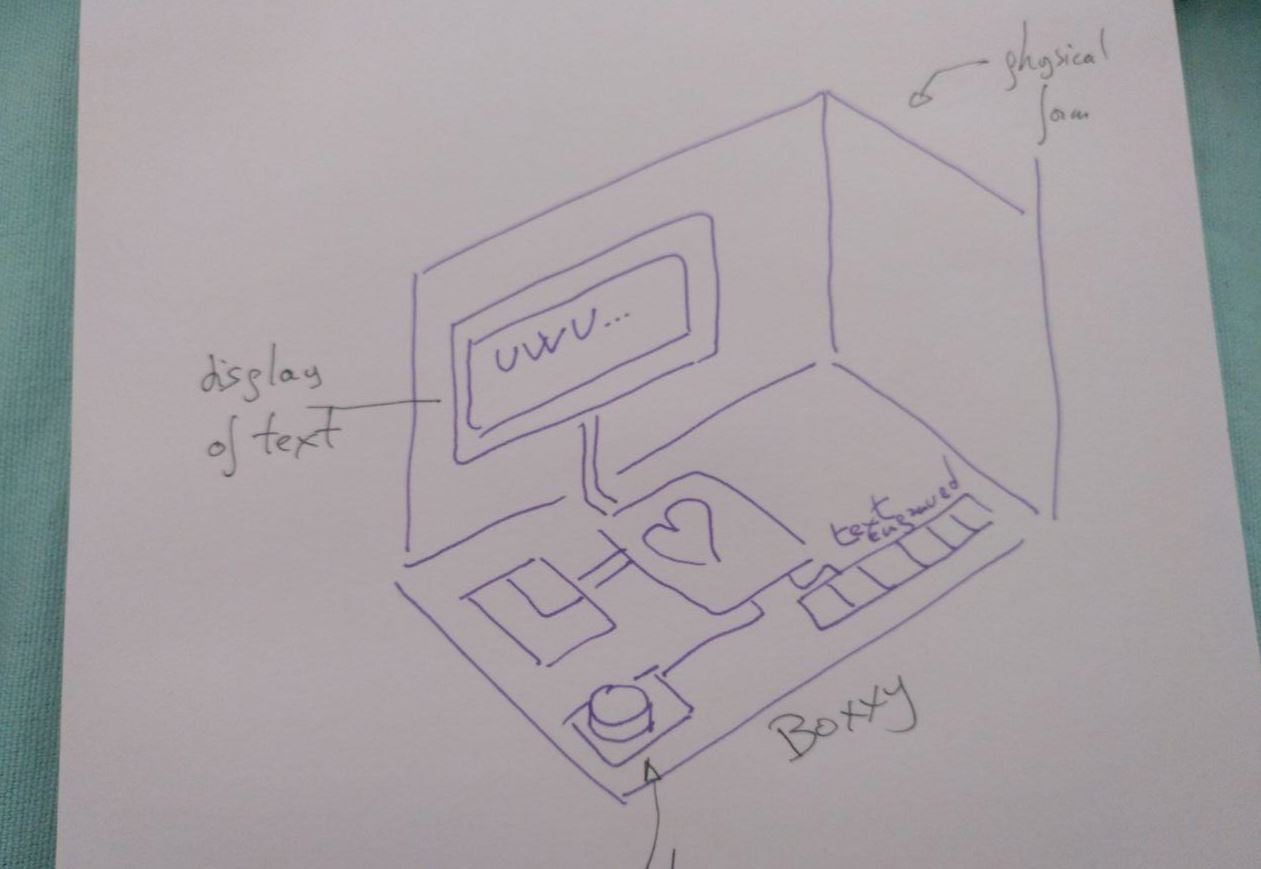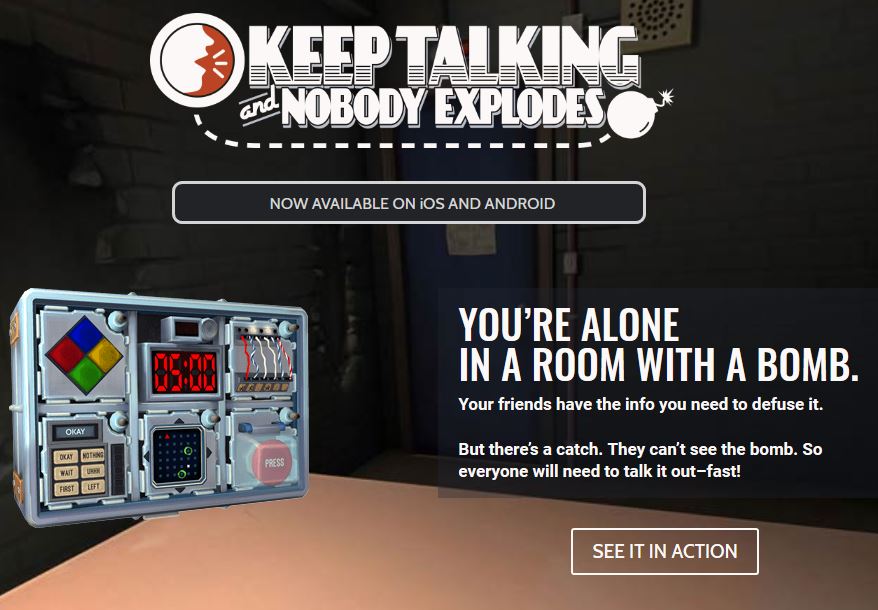1. Principles and practices¶
This week I worked on defining my final project idea and started to getting used to the documentation process.
Story in a cube¶
Last Wednesday I saw in the presentation with Neil a final project of someone in Mexico that was a child story told by a box with a bulb. She talked about the struggles of designing the characters and focusing in the target of children.
Then I wonder, what if the box is the character? And then I started drawing and drafting ideas.
References¶
I’m not sure if this project it’s a narrative or a ludic experience. As a reference (where to hang) I think of the game “Keep talking and nobody explodes ” where 2 teams of n players have to defuse a random generated virtual bomb. One of the teams has access to the bomb and can defuse it by cutting wires and pressing buttons. The other team has only access to the instructions of how to defuse the bomb. It’s a middle ground between the videogames and boardgames.
Going beyond the bomb¶
I like the interaction that it’s gather in that game but I want to be more concrete about telling a story. In Keep Talking and nobody explodes the story that’s told it’s about team effort of undestanding complex instructions and some kind of race of how the team performs better each team it’s done.
I’d like instead to tell a story about the box and their feelings. I don’t know if there is a second box or instructions for another person to read. Probably I’ll play that the instructions and the goal of those instructions are not what are supposed to be. Probably if the box has thoughts about what you’re doing with them.
Drafts in images¶

The assessment¶
Here is the assesment so how can I fullfil this with this kind of project:
- Create your own integrated design
I should make some experiments of how it’s this box and how is they. Boxxy is the preliminar name.
- Demonstrate 2D & 3D modelling capabilities applied to your own designs
I need to shape Boxxy and that will need my 2D and 3D capabilities.
- Select and apply appropriate additive and subtractive techniques
I guess that substractive techniques can work for the structure of Boxxy and additive (casting shapes of buttons) can work for inputs or little designs
- Demonstrate competence in design, fabrication and programming of your own fabbed microcontroller PCB, including an input & output device
I don’t know if I can make the microcontroller as complex as I want it to be, but there will be an outpud of a display and inputs in several ways (at first buttons)
Useful links¶
- The assesment (quite important)
- Keep talking and nobody explodes

